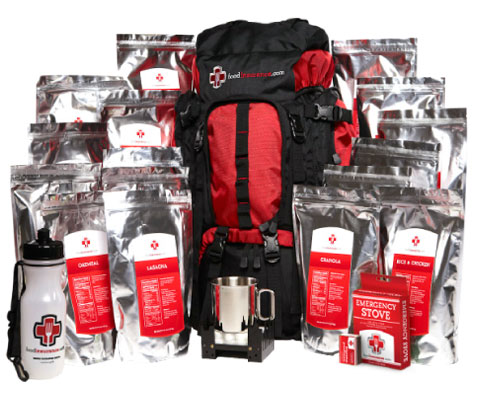According to FEMA, every household should have a 2-week supply of water and food in case of an emergency. Some food storage experts suggest having emergency food storage supplies for one year. If you simply don’t have the room to store enough foods to last a year, you need to at least consider a short term emergency food storage plan. Your plan saves your family’s life during a crisis, and it can be very affordable to put together.
By preparing your short term food storage plan ahead of time, you can ensure that your family eats healthy foods during your time of need. Planning ahead will ensure that your emergency food storage supplies include foods that provide the provide the right amounts of proteins, nutrients and vitamins. This will help to give you mental clarity and energy during your emergency. Below are some basic essentials that are affordable, and will provide the necessary nutrients for you and your family.
Supplies for 2-Week Emergency Food Storage
- 14 gallons of bottled water for every member of your household
- 28 jars of peanut butter for each member of your household
- 28 cans of various meats for each household member (canned beef, ham, tuna, sausage, turkey, chicken, etc…)
- 28 cans of stew or soup for each person in the household
- 42 servings, per person, of non-perishable items. This will provide 3 serving per day, per person, of graham crackers, saltine crackers, cereals pastas, freeze dried vegetables and fruits, etc…)
- 1 can opener (hand-operated)
- Permanent markers
Other Emergency Preparation Tips
Store your emergency food storage supplies in a cool, dry place. Keep them together in one place. That way, in an emergency, you don’t need to panic trying to find everything. Some emergencies may require that you have to leave your home in a hurry. That’s why it’s so important that everything be conveniently packed in a sturdy box or food cooler so you can grab it and go, if needed. Here are some other tips for your short term emergency food storage plan:
- Use a permanent marker to date all of your perishable foods. This will help you to eat the oldest foods first, prolonging your food storage shelf life.
- If possible, your emergency package should contain some money just in case. Try to set aside at least $50 if you can. Store it with your food storage so you don’t have to search for it in an emergency.
- Write a list of local and long distance contact names and numbers. The list should include family and friends that need to be contacted for help or to let them know you’re okay. Store it with your emergency food storage supplies.
Featured images:
- License: Image author owned
Iris Pulga is a blogger who takes emergency preparedness seriously. Her addiction started when she noticed that consecutive typhoons hitting their local area in the Philippines. She gets most of her emergency preparedness and food storage ideas in http://dailybread.com.





